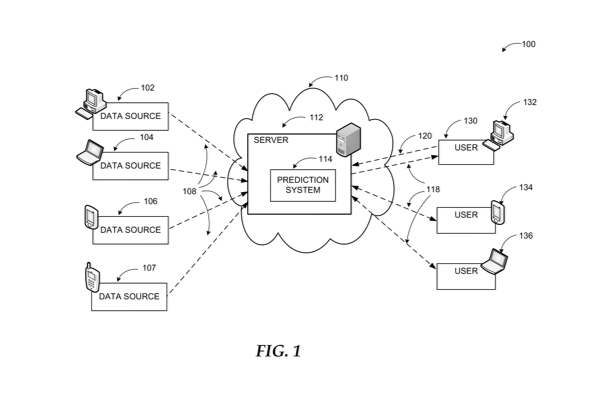
This Patent Application has received a non-final rejection by the US Patent Office! An initial rejection is part of the typical course of a patent application.
Thanks to YOU, the Ask Patents community, overly-broad claims have at least been narrowed. Follow @askpatents to block more overly-broad patent applications. 10 minutes of your time can help narrow US patent applications before they become patents.
AN OVERBROAD PATENT ON PREDICTING USER BEHAVIOR - This application from Microsoft seeks to patent the idea of...automatically predicting actions a user is likely to take in response to receiving data! 10 minutes of your time can help narrow US patent applications before they become patents. Follow @askpatents on twitter to help.
QUESTION - Have you seen anything that was published before Dec 15, 2011 that discusses:
- A method of MONITORING USER ACTION in response to INCOMING DATA FOR A USER; determining a PATTERN OF USER ACTIONS; and
- Predicting the USER’S ACTION in response to his receiving NEW INCOMING DATA;
If so, please submit evidence of prior art as an answer to this question.. We welcome multiple answers from the same individual.
EXTRA CREDIT - A reference to anything that meets all of the criteria to the question above AND ALSO uses a SEED MODEL to make predictions for new users, to utilize OTHER USER BEHAVIOR for existing and new users.
TITLE: PREDICTION OF USER RESPONSE TO RECEIVED DATA
Summary: [Translated from Legalese into English] A method of detecting when a user receives new data, monitoring what the user does in response the the data, and building a model of the user’s future behavior, and predicting the user’s action in response to new incoming data.
- Publication Number: US 20130159220 A1
- Application Number: 13/326,877
- Assignee: Microsoft, Inc.
- Prior Art Date: Seeking prior Art predating Dec 15, 2011
- Open for Challenge at USPTO: Open through Dec 20, 2013
Claim 1 requires each and every step below:
A method executed for predicting user actions in response to receiving incoming data, the method comprising:
detecting incoming data from a data source for a user;
monitoring the user's actions in response to receiving the incoming data;
determining a pattern of user actions in response to the received incoming data;
detecting new incoming data from a data source; and
predicting the user's action in response to receiving the new incoming data based on the pattern of user actions, an incoming data context and an incoming data content.
Claim 19 gives insight into what Microsoft claims to have invented with more specificity
{A method, comprising}:
detecting incoming data from a data source for a user;
extracting one or more features of the incoming data utilizing a feature extractor component;
enabling a sensor component to continuously detect the user's actions in response to receiving the incoming data;
uploading detected user action information from the sensor component and extracted feature information from the feature extractor component to an actions processor;
enabling the actions processor to combine, store, and organize the information from the sensor component and the feature extractor component into a user action database, wherein the user action database includes a list of past actions the user has taken in response to receiving data having one or more features;
determining a pattern of user actions in response to the received incoming data;
detecting new incoming data from a data source; and
predicting the user's action in response to receiving the new incoming data based on the pattern of user actions, an incoming data context and an incoming data content.
In English this means:
A method predicting user actions comprising:
Detecting that user has received some new data; and
Monitoring what the user does in response to the data; and
Extracting patterns of user action in response to the new data; and
Predicting the user’s action based on the previous pattern of user actions and the incoming data
Good prior art would be evidence of a system that did each and every one of these steps prior to the Dec 15, 2011.
You're probably aware of ten pieces of art that meet this criteria already... separately, the applicant is claiming using a SEED MODEL to make predictions for new users, to utilize OTHER USER BEHAVIOR for existing and new users.
"Cloud-based system for observing and predicting user actions” from Microsoft

What is good prior art? Please see our FAQ.
Want to help? Please vote or comment on submissions below. We welcome you to post your own request for prior art on other questionable US Patent Applications.
